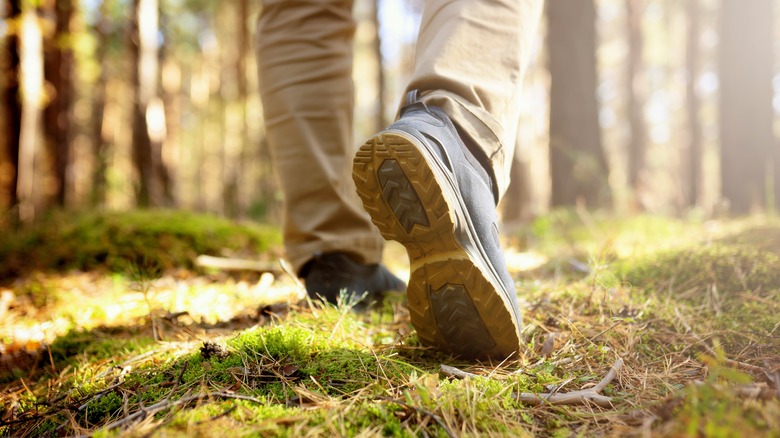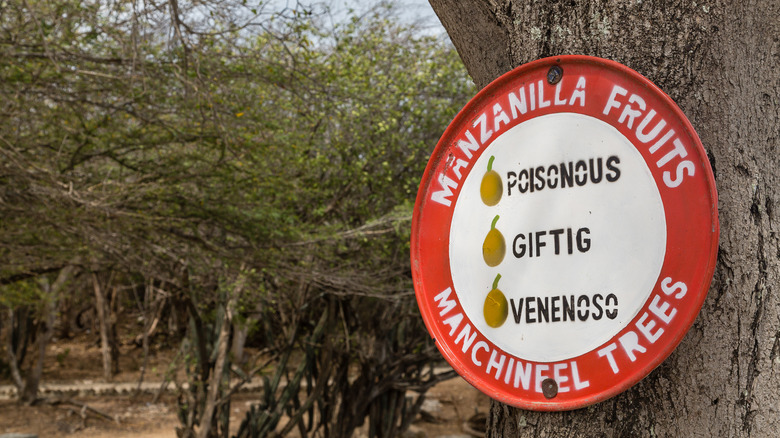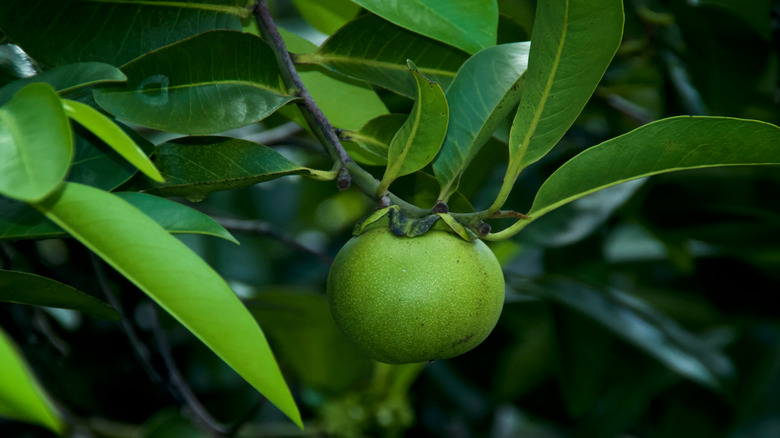Run In Other Direction If You Come Across A Tree Marked With This Sign
Many plants in the world contain toxins that make them dangerous to eat such as water hemlock, oleander, and the aptly named deadly nightshade. There are even plants that cause irritation and pain to touch, like roses with thorns, nettles, and thistles. However, none are quite as dangerous as a certain tree found in tropical areas called the Manchineel. Its scientific name is Hippomane mancinella, but locals tend to call it "The Tree of Death", or "The Little Apple of Death" due to the shape of its fruits. It's one of those plants you might not know are deadly from looking at it due to its rather unassuming nature and appearance.
There are tales dating back to Christopher Columbus of the dangers of the manchineel. From poison arrows made with the sap to burns from cutting and burning the branches, this seemingly ordinary tree poses many more threats than the average plant. The dangers are so severe that many of these trees or groups have signs detailing the threats, warning people to avoid going anywhere near the tree. If there are no signs, a red "X" might also be a sign to leave the plant alone.
The dangers of the manchineel tree
Though many signs highlight the dangers of touching or eating the fruit, that's not the only danger the manchineel tree poses to people. Every part of the plant is harmful. The leaves and bark can cause blindness if they are burned and the smoke gets in your eyes. Additionally, the sap is dangerous. Not only is it poisonous, but it has acidic properties.
Even if you know to avoid touching or eating from the manchineel, there are more dangers that one might not think about. The tree is tall, and has a large canopy, making it the perfect place to rest or park a car to hide from the sun. However, the sap can drip onto people, burning their skin, or if it lands on cars it's been reported to damage the paint. This danger is especially high when it rains. Sap mixes with the water falling through the canopy, creating a toxic rain.
The plant's danger comes from a frightening mix of toxins, though tigliane phorbol esters may be the main danger. Due to the difficulty of handling the plant, some of the toxins haven't yet been identified. Blistering, burning, swelling, low blood pressure, slowed heartbeat, vomiting, pain, abdominal bleeding, blindness, skin irritation, and dehydration are some of the most common symptoms of coming into contact with the manchineel.
Know what to look for
Unfortunately, there aren't always signs around these trees to warn you of the danger. If you're traveling anywhere near South Florida, Central and South America, or the Caribbean, you need to understand what these trees look like, so you can safely avoid them.
Manchineel can grow either as a shrub or a tree up to 50 feet tall. Generally, the bark is gray with a bit of a red hue. It has a lot of texture, with deep crevices in the bark around the trunk. The leaves are large and shiny green, with an elongated heart shape. Each leaf is between two and four inches long. The flowers are small, usually yellow or green, and almost impossible to notice, but the fruit is the most deceptive.
Manchineel fruit looks a lot like apples, starting out bright green which turns more yellow as they ripen. Though they look like apples, they are small, only a few inches in diameter. Most importantly though, they should never be eaten, because while consuming manchineel fruit specifically isn't the most common way people die in the wilderness, accidental poisoning from foraging can be a killer.


